Shigu(石鼓) is an ancient village on the riverbank of the Yangtze River. In this article, I explain what to do and how to get to this beautiful place not far from Lijiang.
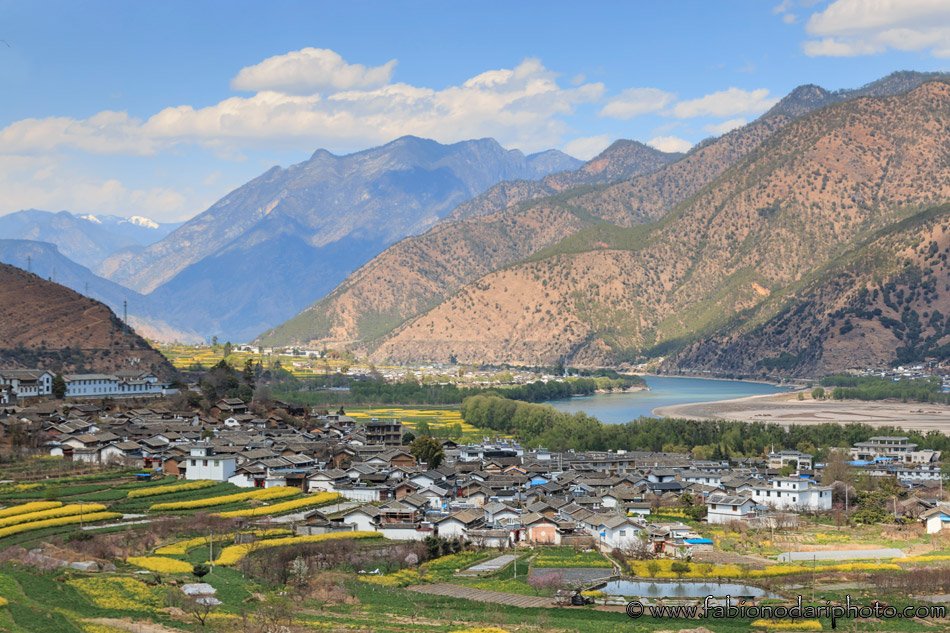
Of all the places I visited in Yunnan, the ancient village of Shigu is one of the most surprising. I think it should be on the bucket list of all those who want to explore China and find new places that mass tourism has not yet discovered.
It is quite incredible to see that there are not many tourists, given that amazing landscapes surround Shigu. Shigu is about two hours from Lijiang, one of the most touristic places in China, but, as I said, there are few tourists there. Get there before everybody else discovers it!
This village is known for two main reasons: it’s on the bank of the Yangtze River, the third-longest in the world and the longest to flow entirely within one country. But not only this, Shigu lies on a very unique point: on the first bend of the Yangtze River, in Chinese: 长江第一湾 (Changjiangdiyiwan)…
The river makes a U-turn at Shigu Town and flows northward; then, it changes direction and goes northeast. The curvature of this turn almost reaches a 140-degree angle. It reminds me of the horseshoe bend in America, with the difference that there is no desert here, but if you go in the right season, you’ll find flowers everywhere: a real paradise at an elevation of 2000 meters!
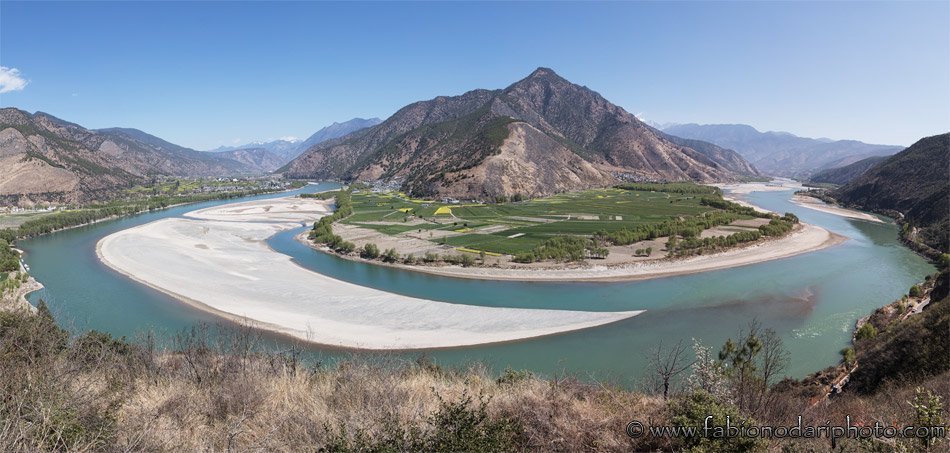
The First Bend of the Yangtze River
The second reason this ancient town is famous is that it was part of the Tea Horse Road. Also known as the Southern Silk Road (in Chinese: 茶马古道 – ChaMaGuDao), it was a trade link between Bengala (now Bangladesh and India) and southern China.
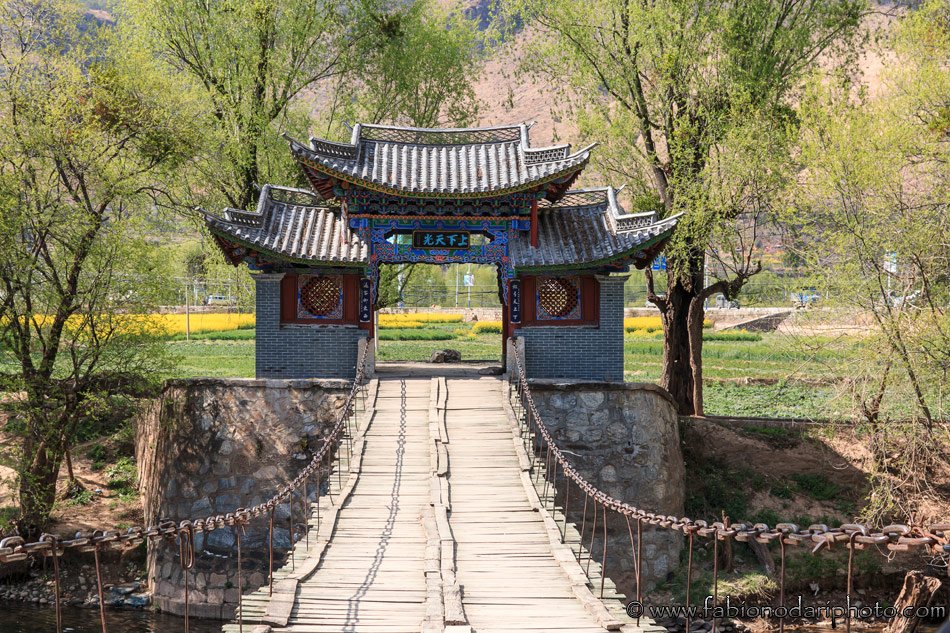
In addition to tea, the mule caravans carried salt. Both people and horses carried heavy loads, the tea porters sometimes carrying over 60–90 kg, which was often more than their own body weight in tea. If this part of Chinese history interests you, you should also visit Shaxi (沙溪). Here you can find more info.
According to some researchers, thanks to this ancient trade route, Tea was first introduced in China.
The village’s name comes from a drum-shaped stone tablet carved with white marble. Two characters form 石鼓(Shigu): 石 means stone and 鼓 means drum.
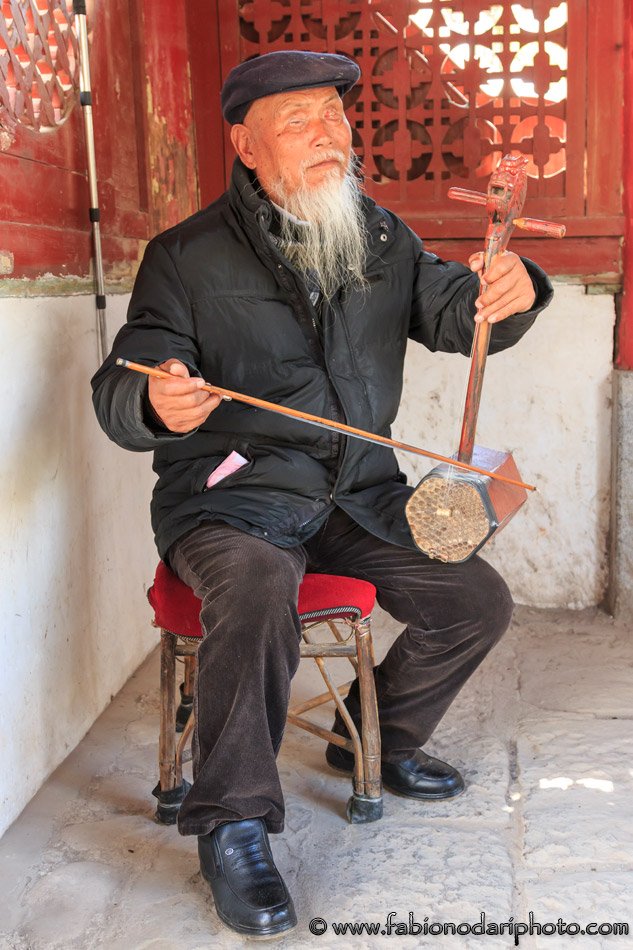
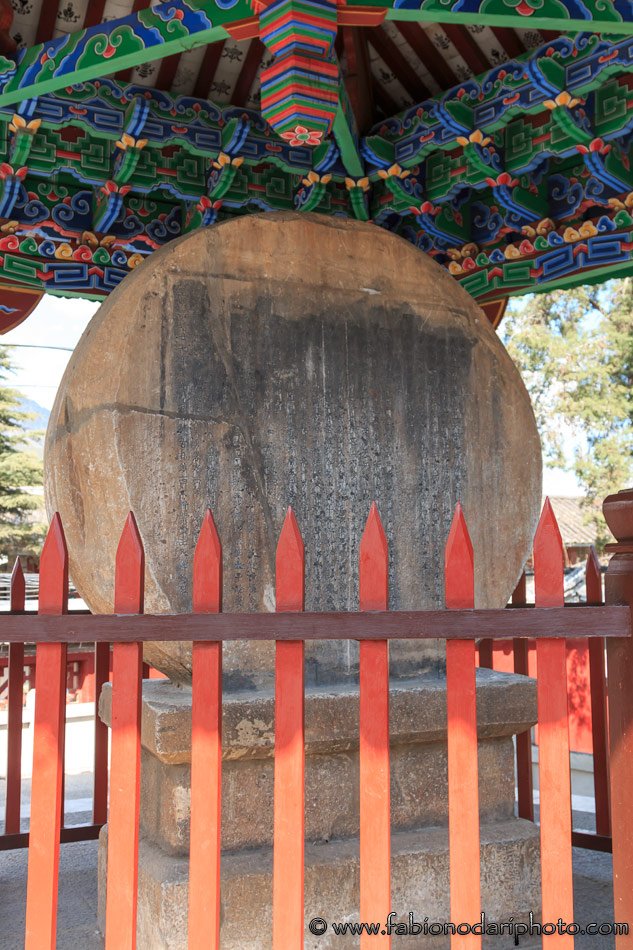
Built during the Jiaqing era (1548-1561) of the Ming Dynasty, the stone drum is a monument commemorating the victory of Lijiang’s Naxi ruler over an invading Tibetan army. It is one point five meters (five feet) in diameter and zero point five meters (two feet) in thickness. The stone drum has an obvious vestige of what appears to be a “rip” in it. It is said that the stone drum would rupture before any war and then fold when peace returned.
How to get to Shigu, and when is the best time to visit
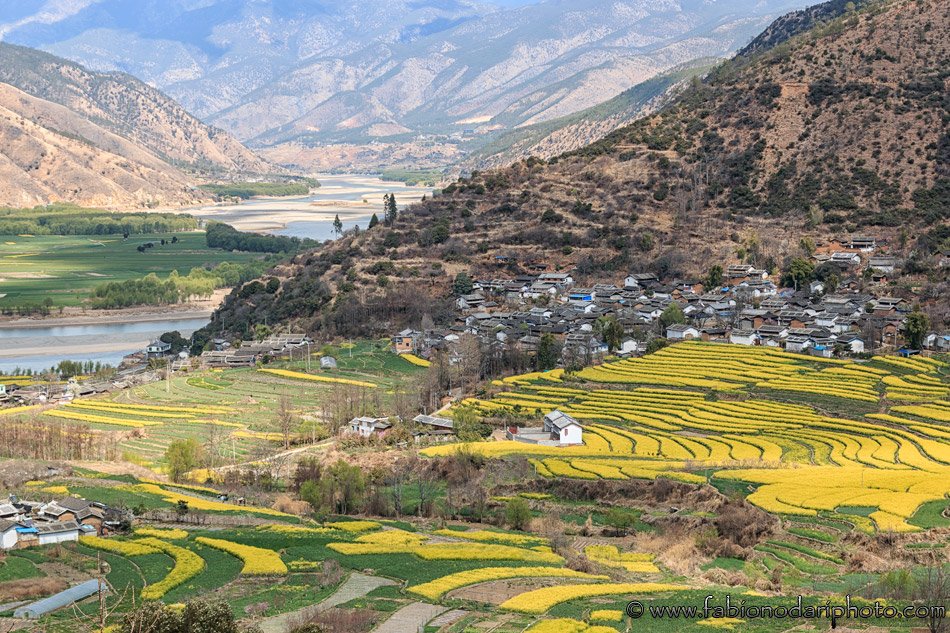
Shigu is about 50 Km from Lijiang, but it takes two hours to get there. There are no public buses from the Lijiang bus station, so you must get to Jinkai Square. There, you’ll find several minivans that drive people from Lijiang to Shigu. Before leaving, the driver waits until the car is full. It shouldn’t cost more than 20RMB per person.
The best time to visit Shiguis during Spring, around mid-March, when you can see the canola flowers in full bloom together with cherries and pear trees: truly an amazing sight. Spring is also a good season because it doesn’t rain much. This being said, I think all the seasons have something unique, including the rainy season when the Yangtze River will reveal all its power. You won’t be able to climb the mountain during a storm, though.
What to do in Shigu
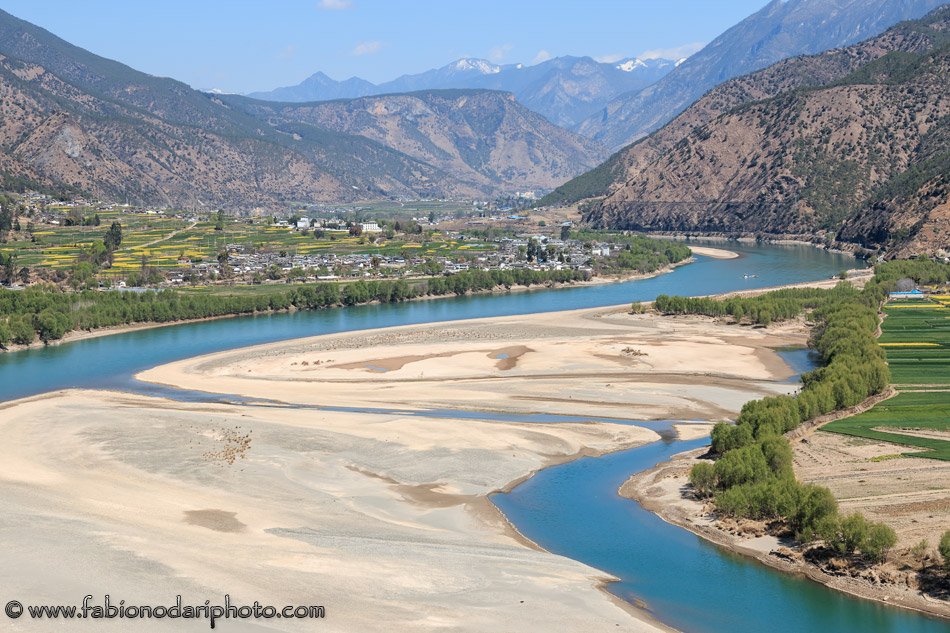
Right where the Yangtze River bends, a mountain can be climbed to take some amazing pictures of the valley below. There are several ways to get there, but sadly, no road signs exist. You’ll either have to explore the area or ask around. Hiking is not very difficult and won’t take more than 20 minutes.
You’ll probably have to pay some local people to let you pass through their property, but it won’t be expensive. There are no fees to pay to get to the terrace at the end of the path, and this is quite rare in China, where you almost always have to buy a ticket to access the best spots. We didn’t have to pay anything because we met a very friendly Chinese man who took us to a small path that didn’t pass through any private property.
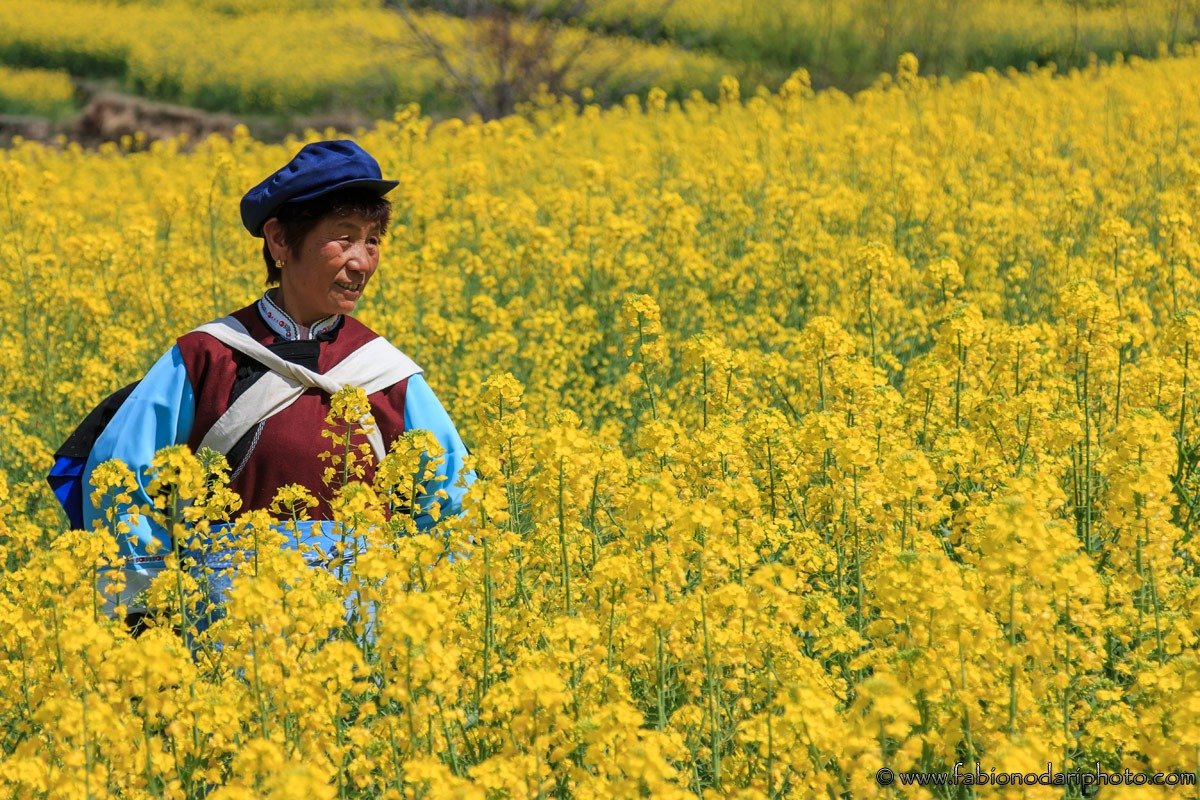
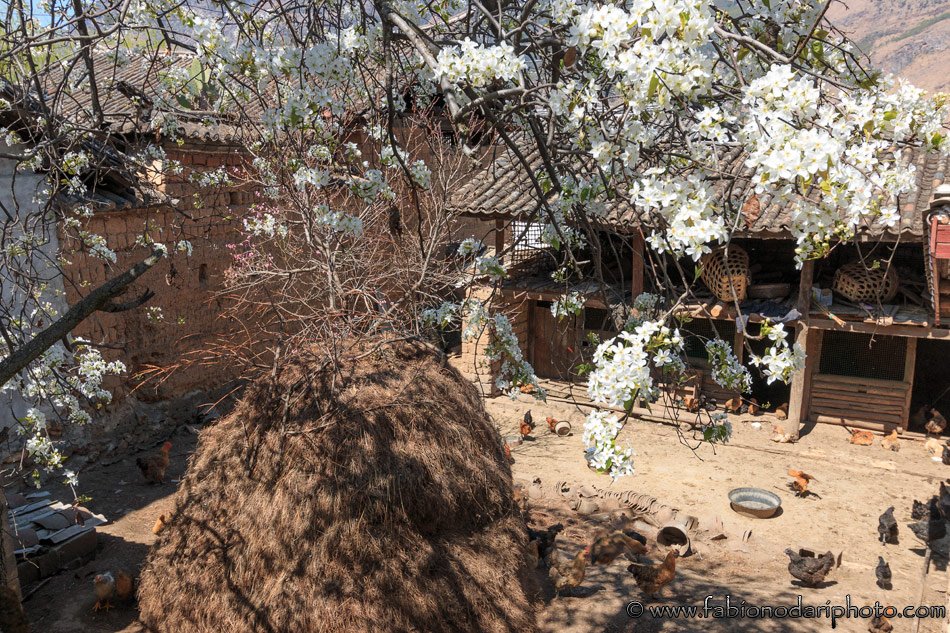
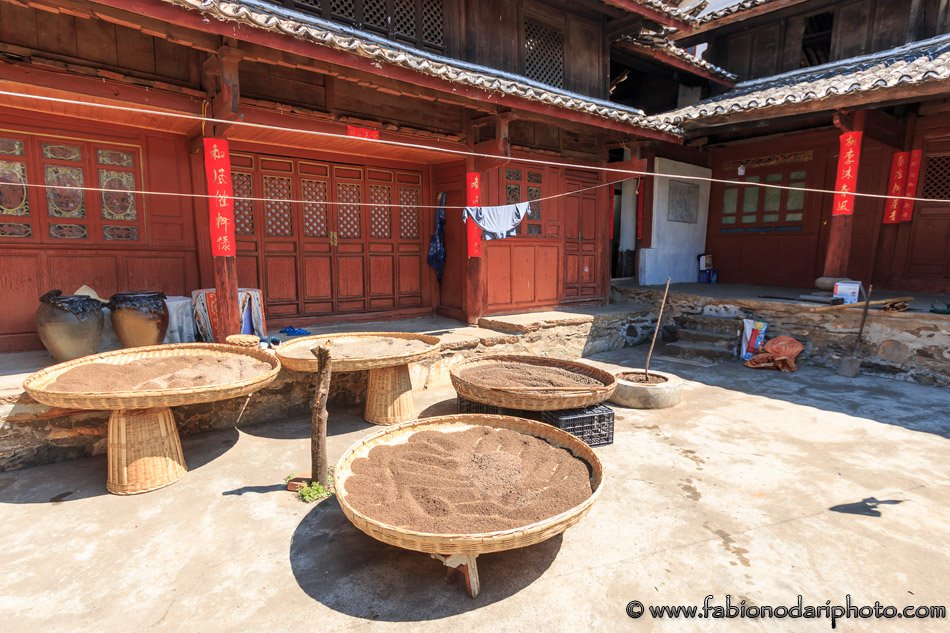
The view from the terrace is amazing, especially if you visit Shigu in spring when the rapeseed flowers are in full bloom. The fields are not as big as the ones in Luoping, but they are beautiful anyway.
Other tips
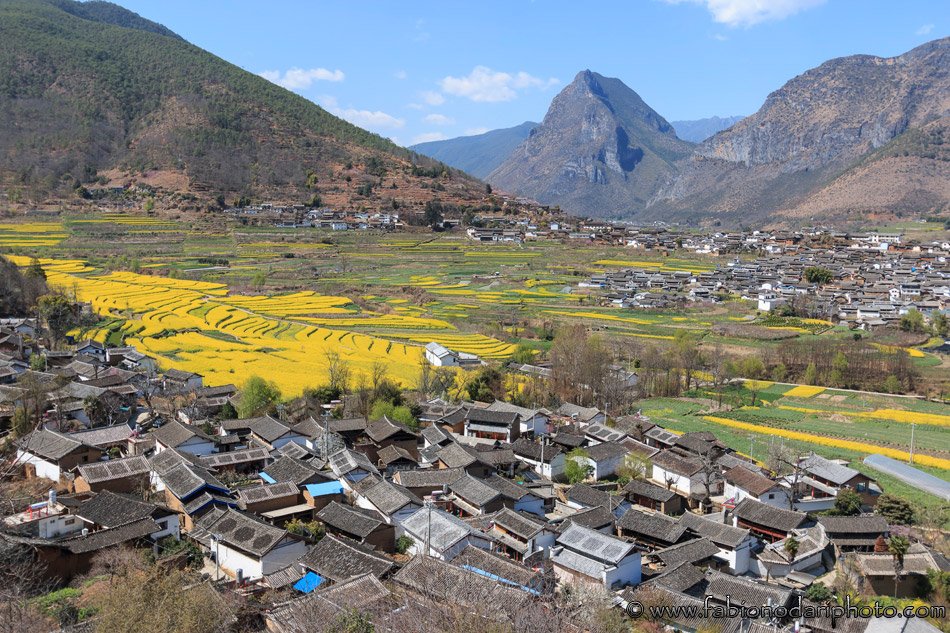
- Getting to Shigu, it’s not easy if you don’t speak Chinese. For this reason, I suggest booking a Tour with a local travel agency.
- Remember that the internet in China is censored, so you can’t use Gmail, YouTube, Facebook, Instagram, Twitter, etc. If you need to use one of those websites, you need a VPN. Forget the FREE VPNs because they won’t work or will be extremely slow (and the internet in China is already slower than in other countries). I use this VPN in China.
- To visit Shigu, you’ll need only one day, but if you are tired of all the tourists in Lijiang and want to relax, it’s a good idea to spend at least one night in this peaceful place. I’m sure you’ll take some amazing pictures of the mountains if you wake up before sunrise. You can find some good deals on Booking.com.
You can find other posts about China here, and here are some more pictures. Here is my guide to visiting Jade Dragon Snow Mountain from Lijiang. Don’t miss my Yunnan travel guide.


